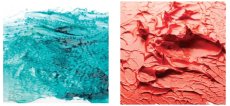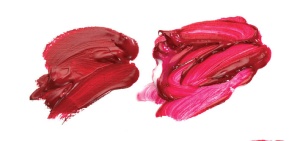Acrylic Mediums
With the help of mediums, acrylics may be used in a fluid, gestural manner (much like water colour) or in heavier applications (as with oils) or they can be shaped and carved, used for print making or in virtually any other technique imaginable.
Mediums can help you to:
Keep your colours brilliant
Improve colour durability and adhesion
Extend the colour
Bring transparency and depth to the film
Improve flow and "brush-ability"
Professional Acrylic and Galeria have their own ranges of mediums. However, both ranges can be used together on the same painting and bring versatility and stability along with the dependable quality that artists have come to expect from Winsor & Newton.
Mediums are used to create an even wider variety of techniques and effects and to prevent overthinning. By changing consistency and finish acrylics can be safely altered to a very large number of different consistencies, from a thin fluid to a thick gel. Each consistency is available in either matt or gloss.
Changing the Consistency and Finish
General Purpose Acrylic Flow Improver improves flow without any loss in colour strength. This helps the application of flat, even areas of colour. |
|
Glazing and Staining |
|
Brushwork texture and impasto |
|
Slowing the Drying
If the acrylic is drying a little too quickly for you, Acrylic Retarder can be mixed with the colour. This gives more blending time for example on the canvas or slower drying on the palette. Acrylics Palettes can also be used to keep the colour usable for days.
Adding Textures to Acrylics
 The fast drying and adhesive nature of acrylics make them ideal for building up layers of colour using the added texture of mediums for a unique range of effects. Mediums are available with added natural textures like sand and flint and a range of transparent textures from fine to coarse.
The fast drying and adhesive nature of acrylics make them ideal for building up layers of colour using the added texture of mediums for a unique range of effects. Mediums are available with added natural textures like sand and flint and a range of transparent textures from fine to coarse.
In paintings, landscapes and buildings work particularly well with the added texture. Texture gels and natural texture gels also have infinite craft applications, from stencilling to model making.
Galeria Glass Beads Texture Gel / Galeria Heavy Structure Gel
Avoiding Overthinning
Water is used to dilute acrylic colour and clean brushes and palettes after painting. However too much water causes overthinning. As the water thins the acrylic colour by diluting the acrylic binder, if too much is used there will be insufficient binder remaining to bind the pigment. A matt or uneven finish will appear on the painting and the work will be susceptible to scuffing and damage. Overthinning is avoided by the use of mediums in addition to water.
See our range of Acrylic Mediums












